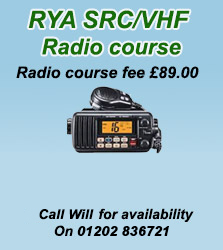
Story 2
Travelling at Speed
To go fast you’ve got to know what you are doing
Let’s face, it even the most sensible of us like to go fast. When the water is calm and the sun shining there is no better feeling than skimming along with your sunglasses pasted to your face.
But to go fast you’ve got to know what you are doing. By keeping alert and assessing situations early, you can make high speed driving safe and fun.
Key points to remember
- Wear your kill cord.
- Keep a good look out for other craft.
- Keep a watch for and predict the effect of waves or wash from other vessels.
- Avoid situations which involve rapid changes in direction.
- Take early action in potential collision situations.
- If in doubt take the power off reducing the closing speeds of vessels.
Always ensure that your crew have a good seating position, a firm grip, and know what you are going to do before you do it. They only know what you are going to do if you tell them beforehand.
Getting on the plane
It takes a lot of power to get on the plane. Once there you can throttle back slightly to ease speed and conserve fuel.
A displacement or semi-displacement hull will never achieve the ability to plane on the top of the water, so its speed will be governed by hull form and the power available.
On a planing boat, good trim can help you get on the plane earlier and then make the ride more comfortable and fuel efficient whilst you are there.
Trimming your boat
Trimming adjusts the underwater strike area of the boat and, in turn, affects the comfort and safety of the crew, yourself and the boat. How you trim your boat will be dependent on your speed, on whether you are going upwind or downwind and on the general sea state.
Trim adjustment varies from boat to boat. Smaller boats are generally trimmed using power trim which adjusts the angle of the outdrive leg or outboard, whereas, larger boats with outdrives or shaft drives, tend to have trim tabs.
You can trim your boat in two ways; fore and aft - raising and lowering the bow and, if you have trim tabs, from side to side levelling the boat if it is leaning to one side.

Using power trim
Leg in to start to keep the prop in the water and help the boat get on the plane.
On the plane ease the leg out to achieve the best speed.

Ease out too much and the prop sucks in air from the surface, making it spin faster but lose grip on the water, therefore slowing the boat.
Ease the leg out by the correct amount and the revs increase slightly without the throttle being adjusted, therefore speed increases.

If the boat starts to porpoise (the bow bounces up and down), trim the leg in to regain control, then slowly ease out to re-trim.
Trim needs constant adjustment. If crew move around the boat or there is a change in sea conditions or speed, you need to check the trim. Fuel use makes the boat lighter – you may need to trim differently when tanks are full or half empty.
Using Trim tabs
Trim tabs trim or level the boat, both fore and aft and side to side. Tabs can make a huge difference to comfort and sea-keeping ability at speed.
Trim tabs are controlled upwards and downwards by either a hydraulic or electric ram system on the transom.
Tabs down raises the stern, which in turn depresses the bow (bow down).

- Tabs up lowers the stern, which in turn raises the bow (bow up).
- As a basic rule you tab down into a head sea and tab up with a following sea.
- Tabs can also be used to compensate for a beam sea or uneven loading.
- One tab down - raises one side of the boat. This is useful to compensate for loading irregularities or a beam sea.
Although tabs are mainly used at speed, they can also be used tabbed down in marinas to increase grip on the water. Beware of powerful reversing when tabbed down, as this can cause damage to the tabs.
Experimentation in different conditions will give the best compromise of comfort, fuel consumption and ride, but tab half down is a good starting point.
Turning at speed
Whenever turning at speed it is important to warn the crew so that they are not thrown out of the boat.
Turning too sharply allows the prop to suck in air (ventilate) and lose grip on the water. Slowing the rate of turn or the amount of revs will allow the prop to grip again. Trim down before commencing a turn for greater grip and control during the turn.
Season 2023/24
Season 2023/24
Call Will for all boat training requirements on
01202 836721

Bespoke Tuition to suit your requirements, can also include crew training on your boat.
Call Will to discuss on
01202 836721
Our Details:
Saltwater Experience
Bailey Bridge Marina,
10 Bailey Drive,
Christchurch,
Dorset BH23 2BN
Tel: 01202 836721
Principal: Will Eveleigh
Chief Instructor: Lloyd James





